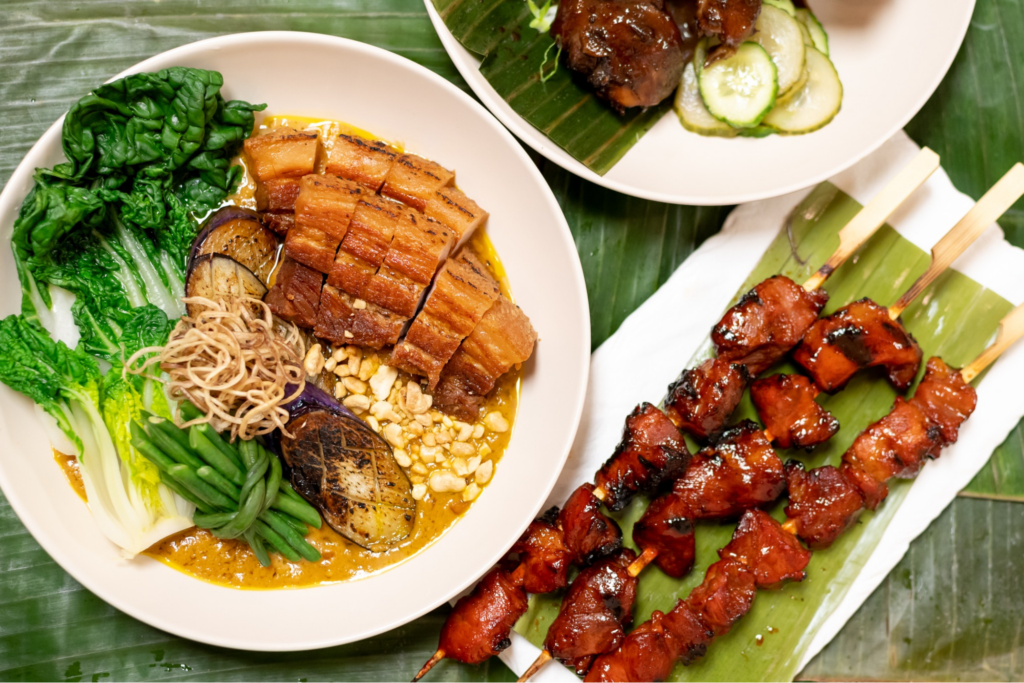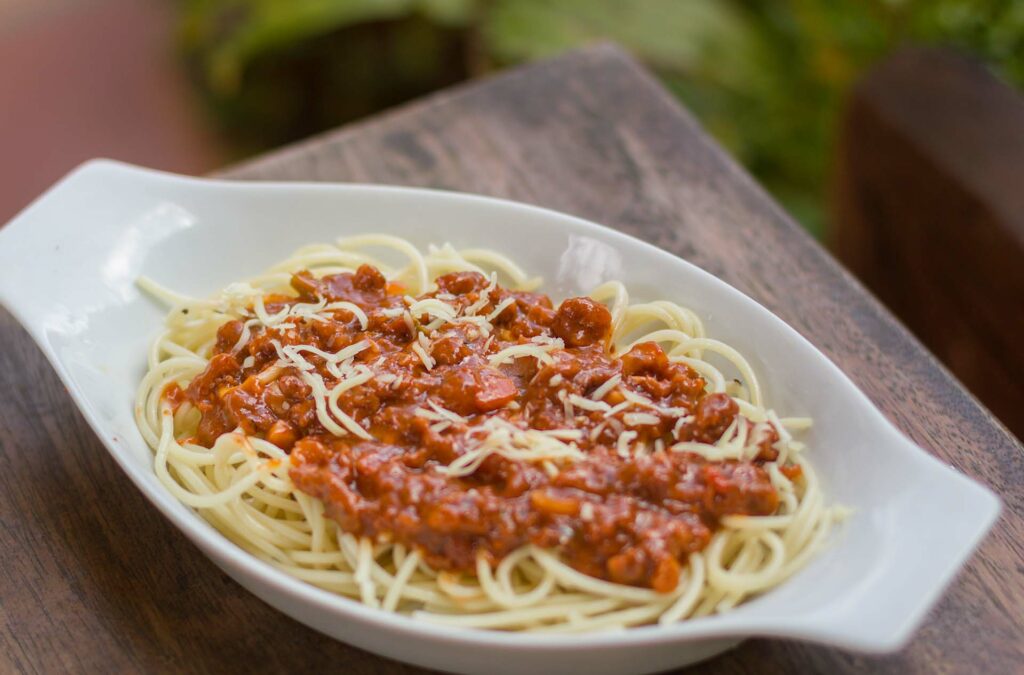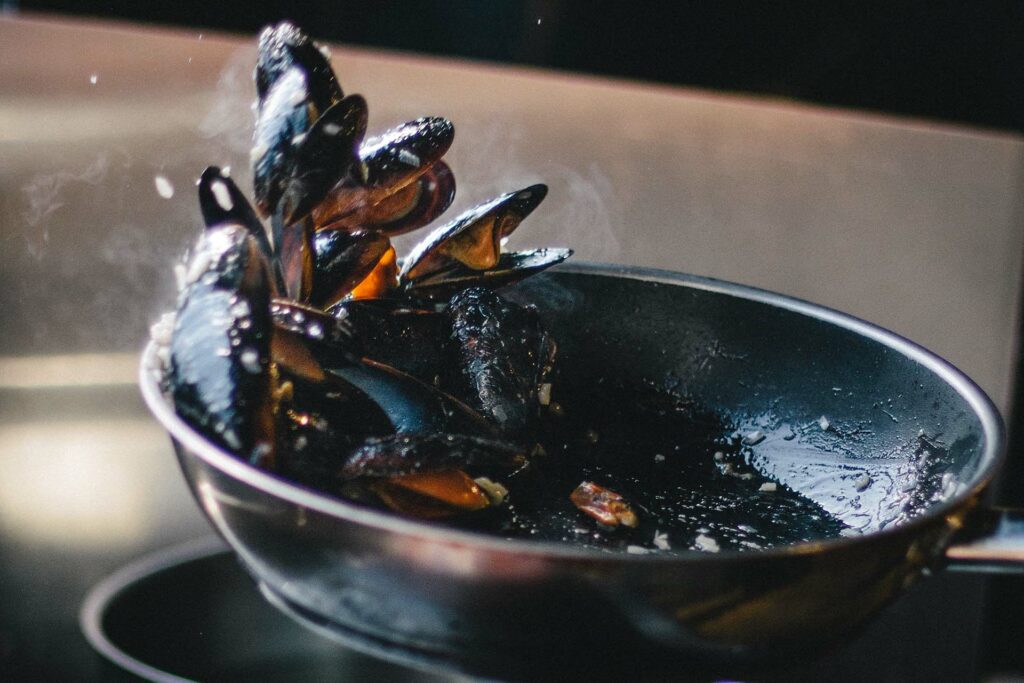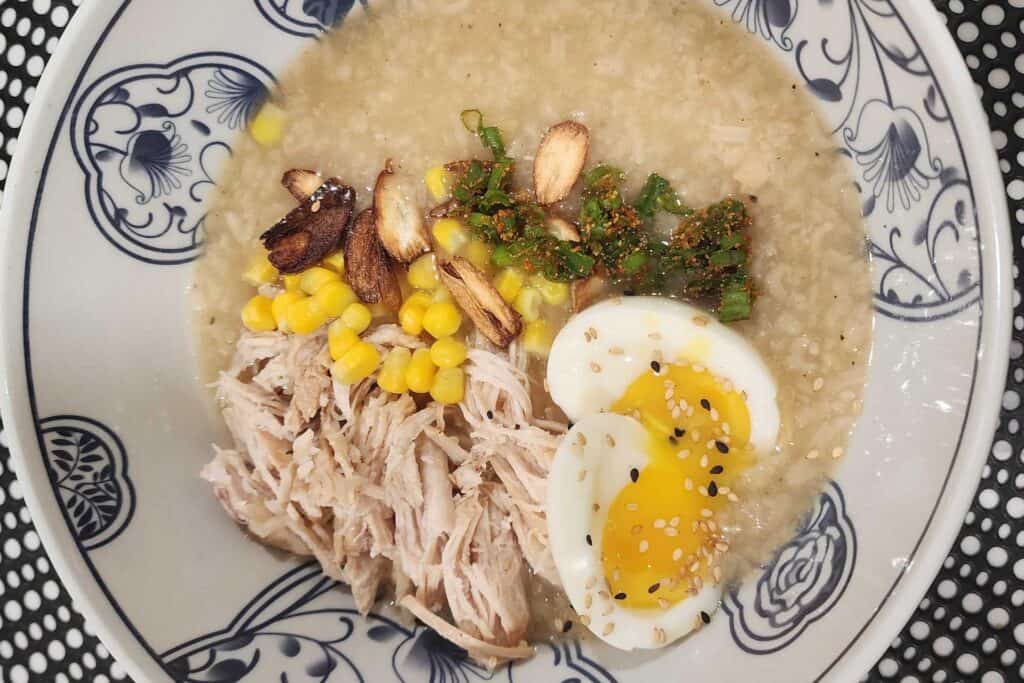If you find yourself wandering through the culinary landscapes of Louisiana, Vietnam, or China, chances are you’ll come across a beloved delicacy that has captured the hearts and palates of people around the world: crawfish. These small, freshwater crustaceans have become synonymous with vibrant festivals, mouthwatering boils, and a unique flavor that leaves many intrigued. In this comprehensive blog post, we embark on a gastronomic journey to answer the burning question: What do crawfish taste like?
Crawfish: A Gastronomic Delight
Before we dive into the intricacies of their taste, it’s essential to understand the cultural significance and global appeal of crawfish cuisine. From the iconic crawfish boils of Louisiana to the fusion dishes of Vietnam and the bold flavors of China, crawfish have found their way into diverse culinary traditions. We’ll explore the regional variations in preparation, cooking methods, and popular dishes from each cuisine, immersing ourselves in the rich tapestry of crawfish gastronomy.
Understanding the Flavor Profile of Crawfish
To truly comprehend what makes crawfish a sought-after delicacy, we must delve into the nuances of their taste. Describing the flavor and texture of crawfish meat is an art in itself, and we will attempt to unravel its complexity. We’ll examine the factors that influence the taste of crawfish, including their habitat, diet, and the cooking techniques employed. Drawing comparisons to other seafood such as lobster and shrimp, we’ll uncover the distinguishing characteristics that make crawfish a unique culinary experience.
Regional Variations in Crawfish Taste
One cannot discuss the taste of crawfish without exploring the regional variations that have shaped its flavor profile. We’ll start with the iconic Louisiana-style crawfish boils, where spice, heat, and savory flavors dominate the scene. From the traditional Cajun seasoning blend to the impact of spices on the overall taste, we’ll dissect the distinct flavors that define this Southern delicacy.
Venturing eastward, we’ll discover the fusion of flavors in Vietnamese-style crawfish. Vietnamese cuisine, known for its vibrant herbs and spices, lends a unique twist to crawfish dishes. We’ll uncover the influence of Vietnamese cooking techniques and the marriage of flavors that create a harmonious balance on the palate.
Our journey then takes us to China, where the bold and aromatic flavors of Sichuan cuisine reign supreme in crawfish preparations. From the fiery heat of chili peppers to the pungency of garlic and other spices, we’ll explore the explosion of taste that awaits those who savor Chinese-style crawfish.
Lastly, we’ll touch upon other regional variations, each with its own distinct flavor profile. Whether it’s the creole influences in Southern United States or the delicate spices of Thai-style crawfish, we’ll glimpse into the vast array of tastes that crawfish brings to the table.
Personal Experiences and Expert Opinions
To provide a well-rounded perspective, we’ll turn to personal experiences and expert opinions on the taste of crawfish. We’ll gather anecdotes and stories from individuals who have indulged in the delights of crawfish, capturing their thoughts and sensations as they savor this crustacean. Additionally, we’ll conduct interviews with renowned chefs and food experts who specialize in crawfish cuisine, gaining insights into their culinary techniques and their take on the enigmatic taste of crawfish. Furthermore, we’ll scour online platforms and forums, analyzing the reviews and opinions of food enthusiasts to compile a comprehensive overview of the general consensus on what crawfish truly tastes like.
Join us on this epicurean adventure as we unearth the secrets of crawfish flavor, exploring the vibrant regional variations and the opinions of those who have tasted this celebrated crustacean. By the end of this blog post, you’ll have a deeper understanding of what makes crawfish a gastronomic delight and perhaps even be inspired to embark on your own crawfish tasting adventure. So, fasten your seatbelts and get ready to tantalize your taste buds with the captivating world of crawfish!
Crawfish Chronicles: Unraveling the Enigmatic Taste
Crawfish, also known as crayfish or crawdads, are small freshwater crustaceans that have captured the hearts and palates of food enthusiasts worldwide. These intriguing creatures have a long history and cultural significance, particularly in regions like Louisiana, Vietnam, and China, where they feature prominently in local cuisines and cultural events.
The culinary journey of crawfish begins with understanding the various preparations and cooking methods employed across different regions. In Louisiana, crawfish boils are a time-honored tradition, where friends and family gather around a communal table piled high with steaming crawfish, corn, potatoes, and sausages. The process involves boiling the crawfish in a seasoned broth, infused with a blend of spices that adds depth and complexity to the flavor. The result is a medley of savory, spicy, and slightly sweet notes in each succulent bite. The Louisiana-style crawfish boil represents the heart and soul of Cajun and Creole cuisine, showcasing the rich cultural heritage and love for bold flavors.
In Vietnam, crawfish takes on a different flavor profile, infused with the vibrant herbs and spices that define Vietnamese cuisine. Here, the crawfish is often stir-fried with aromatic ingredients like lemongrass, garlic, chili, and fish sauce, creating a fusion of flavors that combines the sweetness of the crawfish meat with the tangy, umami-rich elements of Vietnamese cooking. The result is a harmonious balance of flavors, where the delicate taste of the crawfish is enhanced by the boldness of the accompanying ingredients.
China, too, has its own take on crawfish, particularly in the Sichuan province, known for its bold and fiery flavors. Sichuan cuisine is famous for its liberal use of chili peppers, garlic, and Sichuan peppercorns. When it comes to crawfish, these flavors are brought to the forefront, resulting in a dish that is both numbing and spicy. The crawfish is often stir-fried with a plethora of spices, creating a mouthwatering experience that leaves a lingering heat on the palate. The combination of the crawfish’s natural sweetness with the intensity of the spices creates a unique flavor profile that is distinctly Chinese.
Beyond these regional variations, crawfish has found its way into numerous other cuisines, each with its own distinct flavor profiles. Thai-style crawfish incorporates the vibrant flavors of Thai cuisine, including ingredients like lemongrass, lime leaves, and Thai chili peppers, resulting in a tangy and aromatic dish. In the Southern United States, creole influences add a touch of sophistication to crawfish dishes, often featuring a blend of herbs, spices, and a hint of smokiness.
As we explore the taste of crawfish, it becomes evident that the flavor is not solely determined by the cooking techniques or regional variations but is also influenced by the habitat and diet of the crawfish itself. Crawfish harvested from different bodies of water may exhibit slight variations in flavor due to the varying mineral content and quality of the water. Additionally, the diet of the crawfish, which primarily consists of plant matter and small aquatic creatures, contributes to the overall taste and texture of the meat.
In conclusion, the taste of crawfish is a delightful combination of flavors that varies depending on the region and the cooking techniques employed. Whether it’s the spicy Cajun-infused crawfish boils of Louisiana, the aromatic fusion dishes of Vietnam, or the bold and fiery flavors of Sichuan cuisine in China, crawfish offers a unique and captivating taste experience. Exploring the diverse regional variations and understanding the factors that influence the flavor profile of crawfish allows us to appreciate the rich culinary heritage associated with these enigmatic crustaceans.
Crawfish: A Gastronomic Delight
Crawfish, also known as crayfish or crawdads, have become a gastronomic delight in various cuisines around the world. From the Southern United States to Vietnam and China, these small crustaceans have captured the attention of food enthusiasts and have become an integral part of cultural events and festivals.
In Louisiana, crawfish holds a special place in the hearts of locals, particularly during the spring season when crawfish boils take center stage. These vibrant events bring communities together, where large pots are filled with water, spices, and vegetables, and brought to a rolling boil. The crawfish, often live and fresh from the nearby ponds and swamps, are added to the pot and cooked until they turn a vibrant shade of red. The result is a communal feast where friends and family gather to peel and savor the tender meat of the crawfish, all while enjoying the company and lively atmosphere.
The flavor of crawfish in Louisiana-style boils is a unique blend of spices and seasonings. The traditional Cajun seasoning blend, which typically includes ingredients like paprika, cayenne pepper, garlic powder, onion powder, and various herbs and spices, imparts a rich and complex flavor to the crawfish. The spices create a savory and slightly spicy profile, adding depth and character to the naturally sweet and succulent meat of the crawfish. Each bite is a burst of flavors that dances on the taste buds, leaving a lingering and memorable experience.
In Vietnam, crawfish takes on a different culinary identity. Vietnamese cuisine is renowned for its fresh ingredients, vibrant herbs, and delicate balance of flavors. Crawfish dishes in Vietnam often feature a fusion of Vietnamese and French influences, reflecting the country’s colonial history. The crawfish is typically stir-fried with a medley of aromatic ingredients, such as lemongrass, garlic, chili, and fish sauce. The result is a harmonious blend of flavors, where the sweetness of the crawfish meat is enhanced by the tanginess of the fish sauce, the herbal notes of the lemongrass, and the subtle heat from the chili. This fusion of flavors creates a unique taste profile that is both refreshing and complex.
In China, crawfish has gained immense popularity, particularly in the Sichuan province, known for its bold and spicy cuisine. Sichuan-style crawfish is characterized by its fiery heat and aromatic flavors. The crawfish is typically stir-fried with a generous amount of chili peppers, Sichuan peppercorns, garlic, and other spices. The combination of the crawfish’s natural sweetness with the intensity of the spices creates a mouthwatering experience that is simultaneously numbing and spicy. Each bite is an explosion of flavors, leaving a tingling sensation on the tongue and a lingering heat that keeps you coming back for more.
These are just a few examples of the regional variations in crawfish cuisine. From Thailand to Spain to Sweden, crawfish has found its way into various culinary traditions, each showcasing a unique flavor profile. Whether it’s the delicate and aromatic Thai-style preparations or the smoky and savory dishes of the American South, crawfish offers a diverse range of tastes that cater to the preferences of different palates.
In the next section, we will delve deeper into the flavor profile of crawfish, exploring the nuances of taste and texture and comparing it to other seafood counterparts. By understanding the distinct characteristics of crawfish, we can truly appreciate its place in the world of culinary delights.

Understanding the Flavor Profile of Crawfish
To truly appreciate what crawfish tastes like, it’s essential to delve into the intricacies of its flavor profile. Crawfish meat is known for its delicate and sweet taste, with a texture that falls somewhere between lobster and shrimp. However, the flavor of crawfish can vary depending on several factors, including its habitat, diet, and the cooking techniques employed.
The habitat in which crawfish are found plays a significant role in their flavor. Crawfish harvested from different bodies of water, such as rivers, ponds, or swamps, may exhibit slight variations in taste due to the varying mineral content and quality of the water. Freshwater crawfish tend to have a cleaner and milder flavor compared to those sourced from brackish or saltwater environments.
Another crucial factor in the taste of crawfish is their diet. Crawfish are omnivorous and feed on a variety of aquatic plants, small animals, and organic matter. Their diet can influence the flavor of their meat, as flavors from their food source can be absorbed and transferred. For example, crawfish that primarily feed on algae and aquatic vegetation may have a slightly earthy or vegetal taste, while those that consume more animal protein may have a richer and more savory flavor.
When it comes to cooking crawfish, different techniques can further enhance or alter their taste. Louisiana-style crawfish boils, as mentioned earlier, involve cooking the crawfish in a seasoned broth infused with a blend of spices. The cooking time and the intensity of the spices can influence the flavor of the crawfish meat. Longer cooking times may result in a more tender texture but can also lead to a slight mushiness. The spices, on the other hand, contribute to the overall taste, adding layers of complexity and heat that complement the natural sweetness of the crawfish.
Comparing the taste of crawfish to other seafood can provide further insights into its flavor profile. While crawfish shares some similarities with lobster and shrimp, it possesses a distinct taste of its own. Lobster, known for its rich and buttery flavor, tends to have a more pronounced sweetness compared to crawfish. Shrimp, on the other hand, has a milder and slightly briny taste. Crawfish falls somewhere in between, offering a delicate sweetness that is both satisfying and unique.
It’s also worth noting that the various parts of the crawfish, such as the tail and claws, can exhibit subtle differences in flavor and texture. The tail meat is the most prized part, known for its tender and succulent qualities. The flavor is concentrated in the tail meat, offering a pure taste of crawfish. The claws, being slightly tougher and more muscular, have a slightly different texture and may possess a more pronounced savory flavor.
Understanding the flavor profile of crawfish allows us to fully appreciate its uniqueness and versatility in culinary applications. Whether enjoyed in a traditional Louisiana boil, a spicy Sichuan stir-fry, or a delicate Vietnamese dish, crawfish brings its own distinct taste to the table. Its delicate sweetness and tender texture make it a favorite among seafood lovers, while the regional variations in preparation and cooking methods provide an exciting array of flavors to explore.
In the next section, we will delve deeper into the regional variations in crawfish taste, exploring the spice-infused Louisiana boils, the fusion of flavors in Vietnamese-style dishes, and the bold and aromatic profile of Chinese crawfish preparations. By examining these variations, we can gain a deeper understanding of how different cuisines have embraced and transformed the taste of crawfish.
Regional Variations in Crawfish Taste
Crawfish, being a culinary delight in various parts of the world, has undergone unique transformations in taste and flavor across different regions. One cannot fully explore the taste of crawfish without delving into the regional variations that have shaped its gastronomic journey. In this section, we will take a closer look at the distinctive flavors of crawfish in Louisiana-style boils, Vietnamese-style dishes, Chinese cuisine, and other regional variations.
Louisiana-style Crawfish Boils: Spice, Heat, and Savory Flavors
Louisiana-style crawfish boils have become synonymous with the rich cultural heritage of the state. These iconic gatherings bring people together to indulge in a feast of crawfish, corn, potatoes, and sausages, all steeped in a flavorful broth. The taste of Louisiana-style crawfish boils is known for its spice, heat, and savory flavors.
At the heart of a Louisiana-style boil is the seasoning blend that infuses the crawfish with robust flavors. The traditional Cajun seasoning typically consists of a combination of spices such as paprika, cayenne pepper, garlic powder, onion powder, and various herbs and spices. The seasoning blend adds depth and complexity to the crawfish, elevating its natural sweetness with layers of savory, smoky, and slightly spicy undertones. The result is a flavor profile that is both bold and comforting, leaving a lasting impression on the taste buds.
The level of heat in Louisiana-style crawfish boils can vary depending on personal preference and regional variations. Some boils embrace a fiery intensity, while others opt for a milder approach. The spice and heat not only enhance the flavor but also add an element of excitement and anticipation to the dining experience. As you peel the crawfish and take that first bite, the spices tingle the palate, creating a sensory journey that is as much about the taste as it is about the sensation.
Vietnamese-style Crawfish: A Fusion of Flavors
Vietnamese cuisine is renowned for its delicate balance of flavors, vibrant herbs, and fresh ingredients. When it comes to crawfish, Vietnamese-style preparations offer a unique fusion of tastes that combine the natural sweetness of the crawfish with the aromatic ingredients and seasonings of Vietnamese cooking.
In Vietnamese cuisine, crawfish is often stir-fried with a medley of herbs, spices, and aromatics. Lemongrass, garlic, chili, and fish sauce are common ingredients used to enhance the flavor of the crawfish. The result is a harmonious blend of flavors that brings out the delicate sweetness of the crawfish while infusing it with the tanginess of the fish sauce, the citrusy notes of lemongrass, and the gentle heat of the chili. This combination creates a refreshing and complex taste profile that is both satisfying and intriguing.
The Vietnamese approach to crawfish highlights the culinary creativity and adaptability that characterizes the cuisine. By incorporating local ingredients and techniques, Vietnamese-style crawfish dishes offer a unique experience that showcases the harmony of flavors and the artistry of Vietnamese cooking.
Chinese-style Crawfish: Bold and Aromatic Flavors
China, particularly the Sichuan province, has its own take on crawfish, characterized by bold and aromatic flavors. Sichuan cuisine is renowned for its liberal use of chili peppers, garlic, and Sichuan peppercorns, which create a distinctive numbing and spicy sensation on the palate.
In Chinese-style crawfish preparations, the crawfish is typically stir-fried with a plethora of spices and aromatics. The combination of chili peppers, garlic, ginger, and Sichuan peppercorns infuses the crawfish with a depth of flavor that is both bold and complex. The heat from the chili peppers, combined with the numbing sensation of the Sichuan peppercorns, creates a unique taste experience that is characteristic of Sichuan cuisine. Each bite is a flavorful adventure, with the intense heat and aromatic spices tantalizing the taste buds and leaving a lasting impression.
Other Regional Variations and Their Distinct Flavor Profiles
Beyond the Louisiana-style boils, Vietnamese-style dishes, and Chinese preparations, crawfish has found its way into various other culinary traditions, each with its own distinct flavor profile. Thai-style crawfish incorporates the vibrant flavors of Thai cuisine, such as lemongrass, lime leaves, and Thai chili peppers, resulting in a tangy and aromatic dish. In the Southern United States, creole influences add a touch of sophistication to crawfish dishes, often featuring a blend of herbs, spices, and a hint of smokiness.
The world of crawfish cuisine is vast and diverse, with each regional variation offering a unique flavor experience. From the spicy and savory notes of Louisiana-style boils to the fusion of tastes in Vietnamese-style preparations and the bold and aromatic flavors of Chinese cuisine, crawfish has truly captured the hearts and palates of people around the globe.
In the next section, we will uncover personal experiences and expert opinions on the taste of crawfish, gathering anecdotes, insights from renowned chefs, and online reviews to provide a comprehensive overview of what crawfish truly tastes like. By exploring the perspectives of those who have indulged in this delicacy, we can gain a deeper understanding and appreciation for the diverse and captivating flavors of crawfish.
Personal Experiences and Expert Opinions
To truly understand what crawfish tastes like, it is valuable to gather insights from individuals who have experienced the flavors firsthand. Personal anecdotes, expert opinions, and online reviews provide a comprehensive overview of the taste sensations associated with crawfish. By exploring these perspectives, we can gain a deeper understanding of the diverse and captivating flavors this crustacean offers.
Gathering Anecdotes and Personal Experiences
Numerous individuals have had the pleasure of tasting crawfish, whether at a crawfish boil, a restaurant, or during a special occasion. Their personal experiences shed light on the unique and unforgettable taste of crawfish. Many describe the flavor as a delicate sweetness with subtle hints of brininess, accompanied by a tender and succulent texture.
Some individuals highlight the nuances of the different parts of the crawfish. The tail meat, which is the most sought-after, is often praised for its tenderness and natural sweetness. The claws, while slightly tougher, offer a more robust and savory flavor. These varying textures and tastes contribute to the overall delight of indulging in crawfish.
Interviews with Renowned Chefs and Food Experts
Renowned chefs and food experts who specialize in crawfish cuisine provide valuable insights into the taste and preparation of this beloved crustacean. Their expertise and experiences allow us to delve deeper into the intricacies of crawfish flavor.
Chefs often emphasize the importance of freshness when it comes to crawfish. The delicate and sweet taste is best showcased when the crawfish is live and cooked soon after harvest. This ensures that the natural flavors are preserved and that the meat remains tender and succulent.
Chefs also highlight the role of seasoning and spices in enhancing the taste of crawfish. The blend of spices used in Louisiana-style boils, for example, adds complexity and depth to the flavor profile. The right balance of spices complements the natural sweetness of the crawfish without overpowering it.
Furthermore, food experts emphasize the impact of cooking techniques on the taste of crawfish. Boiling, steaming, grilling, or stir-frying can all yield distinct flavor profiles. Each method brings out different qualities of the crawfish, allowing for a variety of taste experiences.
Analyzing Online Reviews and Opinions
The internet provides a vast array of opinions and reviews from food enthusiasts who have tasted crawfish. Online platforms and forums serve as spaces for individuals to share their experiences and offer recommendations. Analyzing these reviews reveals valuable insights into the overall consensus on what crawfish tastes like.
Many reviewers express their love for the delicate sweetness of crawfish, noting its unique flavor and comparing it to a cross between lobster and shrimp. Some describe it as having a milder and sweeter taste compared to lobster, while others appreciate the tender and succulent texture.
Additionally, online reviews highlight the role of regional variations in the taste of crawfish. Individuals often comment on the spice-infused flavors of Louisiana-style boils, the aromatic fusion of Vietnamese-style dishes, or the bold and fiery tastes of Chinese preparations. These descriptions further emphasize the diversity of crawfish flavor experiences.
By examining personal experiences, expert opinions, and online reviews, we gain a comprehensive understanding of what crawfish truly tastes like. The common threads of delicate sweetness, tenderness, and succulence run through these accounts, highlighting the unique and captivating qualities of crawfish.
In the next section, we will summarize the key points discussed throughout this blog post and offer final thoughts on the diverse and delightful flavor of crawfish.
Exploring the Diverse and Delightful Flavor of Crawfish
Throughout this blog post, we have embarked on a gastronomic journey to unravel the enigmatic taste of crawfish. We’ve explored the regional variations in crawfish cuisine, delved into the flavor profile of crawfish, and gathered personal experiences, expert opinions, and online reviews to provide a comprehensive understanding of what crawfish truly tastes like.
Crawfish, also known as crayfish or crawdads, have become a gastronomic delight in various cuisines around the world. In Louisiana-style crawfish boils, the spice, heat, and savory flavors take center stage, creating a communal feast that resonates with the rich cultural heritage of the state. Vietnamese-style crawfish dishes offer a fusion of flavors, infusing the delicate sweetness of the crawfish with the vibrant herbs and aromatic ingredients of Vietnamese cuisine. Chinese-style crawfish, particularly in the Sichuan province, is characterized by bold and aromatic flavors, with fiery heat and a numbing sensation that creates a unique taste experience. These regional variations highlight the diverse and captivating flavor profiles of crawfish.
Understanding the flavor profile of crawfish goes beyond its regional variations. Factors such as the habitat and diet of the crawfish influence its taste. Crawfish sourced from different bodies of water may exhibit slight variations in flavor due to the varying mineral content and quality of the water. The diet of the crawfish, which consists of a mix of aquatic plants and small animals, contributes to the overall taste and texture of the meat.
Comparing the taste of crawfish to other seafood counterparts, such as lobster and shrimp, further enhances our understanding of its unique flavor. Crawfish falls somewhere between these two, offering a delicate sweetness that is both satisfying and distinct. The various parts of the crawfish, such as the tail and claws, also contribute to the overall taste experience, with the tail meat being prized for its tenderness and natural sweetness.
Personal experiences, expert opinions, and online reviews all converge to provide a comprehensive overview of what crawfish truly tastes like. Anecdotes from individuals who have savored crawfish highlight its delicate sweetness and tender texture. Renowned chefs and food experts emphasize the importance of freshness, seasoning, and cooking techniques in enhancing the flavor. Online reviews echo these sentiments, describing the taste as a delicate sweetness with hints of brininess and comparing it to a cross between lobster and shrimp.
In conclusion, crawfish offers a diverse and delightful flavor experience that varies across regions, cooking methods, and personal preferences. Whether enjoyed in a Louisiana-style boil, a Vietnamese fusion dish, a spicy Sichuan preparation, or any other regional variation, crawfish captivates the senses with its delicate sweetness, tenderness, and succulence. Exploring the world of crawfish cuisine allows us to appreciate the rich cultural heritage associated with this crustacean and the artistry that goes into creating its unique flavor profiles.
So, whether you find yourself at a lively crawfish boil in Louisiana, savoring a Vietnamese-style crawfish dish, or indulging in a spicy Chinese preparation, embrace the opportunity to experience the diverse and delightful flavors of crawfish. Let your taste buds embark on a journey that showcases the exquisite taste and culinary creativity that crawfish brings to the table.





